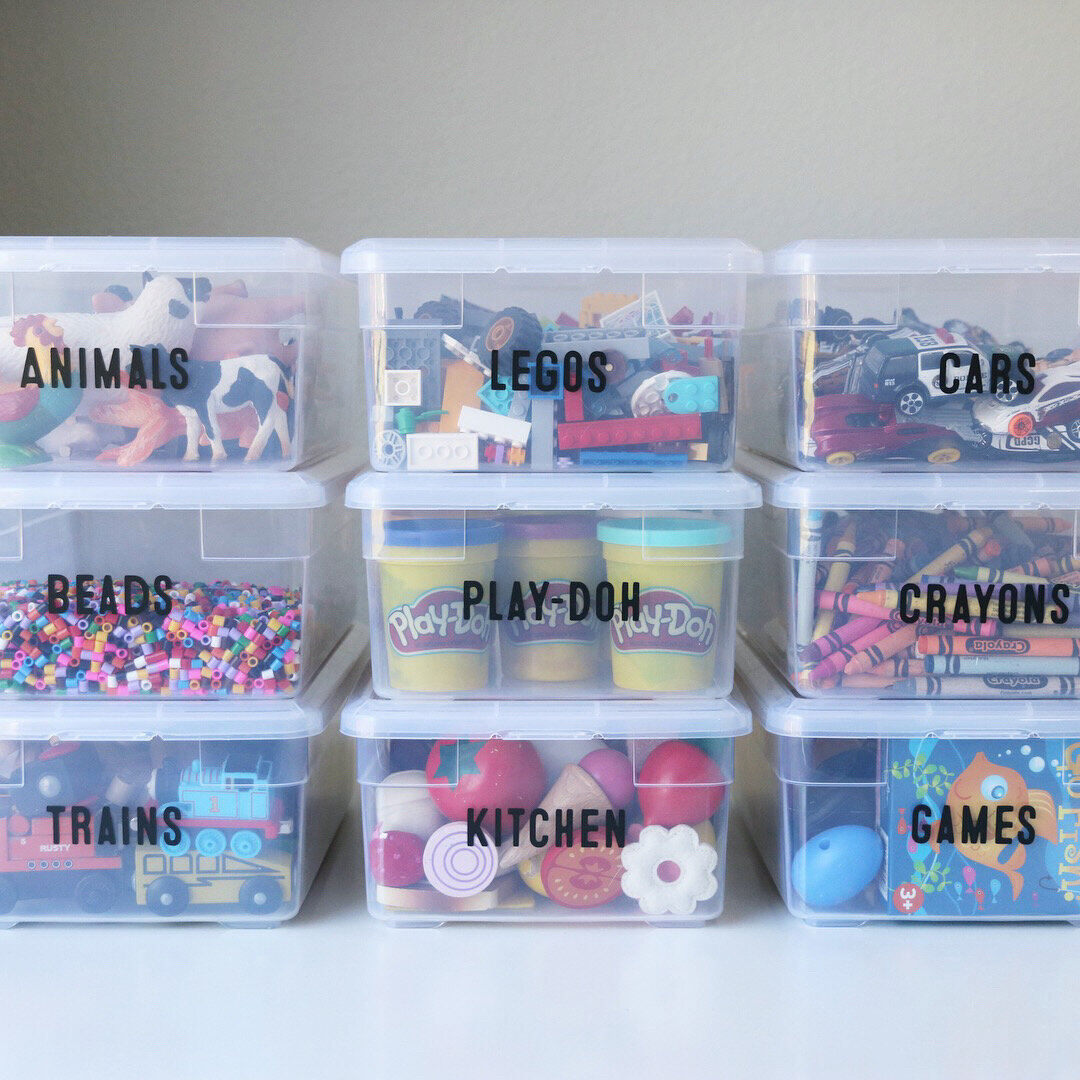Playroom And Toy Organization Tips for Your Home
Picture this. Children who put everything away exactly where it is supposed to be every single time. If you have kids, I’m pretty sure you are shaking your head at me and thinking, “Do you want to see my kid’s playroom?”. It’s true, kids are notorious for being messy with all their many things!
But take a deep breath with me and believe me when I say: we can get this under control. Today, The Orderly Space is dishing out all the goods on playroom and toy organization for your home. We believe you can find a compromise with your child and create a space that promotes creativity and organization.
Start using toy rotations
Let’s start with the truth. Most kids have too many toys. So many in fact that having them all out in the open at all times can actually cause stress for your child due to overstimulation. To reduce clutter and stimuli, practice toy rotations in your home.
Leave a certain number of toy bins, games, puzzles, etc. organized on your child’s shelf for them to play with for a while. After a few weeks, rotate some out for new bins. Not only does this minimize the toys available for your child, but it also gives them “new” toys to play with which sparks imagination and creative play.
Keep your toy rotation items stored in similar bins that are labeled so you know exactly what you are grabbing and swapping. We love these felt bins from Target paired with our bin clips for a beautiful and practical look.
Less is more
Kids need room to use their imagination. The fewer toys they have in their space the more your kids are likely to use their creativity to engage in imaginative play. Boredom leads to creativity, so let your kids get bored once in a while. The fewer items you have out for them to distract themselves with, the more likely you’ll see them pretending to be their favorite character or using the items in the room to create an entire make-believe world.
Don’t squash their creativity, give them space to let their imagination soar.
Broad categories make cleaning up easier for all
If you start narrowing your bins down to very niche categories, you and your child will both dislike cleaning up after a messy play session. The broader the categories you have, the easier it is for your children to keep their area clean.
What do we mean when we say broad categories? My favorite example is this: make a bin for characters versus making a bin for action figures, Paw Patrol, Shopkins, etc. You’ll find the broader the categories you end up with, the easier it is to keep your space organized and clutter-free. Trust me, you’ll thank us in the end!
Labeling
If we’ve said it once, we’ve said it a thousand times, labels make everything so much easier. However, you may have some pre-readers in your playroom or using their toys, so we have a solution that will work for you!
Instead of using the standard word labels, opt for pictures. It is much easier for a pre-reader to associate with pictures of where their toys belong versus being confused on which items go in which bins. In fact, you could just end up with bins of scrambled toys if you label using words versus pictures.
Once your pre-readers become readers and their toys get swapped for more age-appropriate toys, you can go back to a labeling method that encourages reading and organization all in one.
Why fewer toys will benefit your child in the long run
Toy overload is a real thing. While many playrooms and bedrooms these days can be stacked floor to ceiling with toys, is that really the best thing for our children? Encouraging fewer toys in your home will result in:
Kids learning to be much more creative
Kids developing longer attention spans
Kids establishing better social skills
Kids taking greater care of their objects
Kids developing a deeper love for reading, writing, and art
Kids becoming more resourceful by solving problems with the materials they have
Kids becoming less selfish
Kids experiencing more of nature and finding satisfaction outside the toy store
Kids living in a cleaner, tidier, more organized environment
Why do we love this approach so much? It is so encouraging on the child to have them experience all of the things in the world and not just the “toy things”. Don’t get me wrong, I am not anti-toy, just pro-child. When you limit the number of toys available you open their minds.
When dealing with well-meaning grandmas, aunts, etc. who are constantly on the lookout for new toys for your child, consider the powerful impact fewer toys make on your space and your child. In fact, we encourage you to use some of these points as you request experiences, activities, and creative gifts that will open your child up to other opportunities in the world outside of the toybox.
So, what have your favorite options been for toy organization in your home? Do you have something that helps keep your child’s play areas clutter-free that we didn’t mention? We would love to hear about it!





